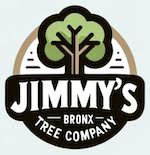Storms can cause severe damage to trees, creating hazards for homes and properties. In New York City, where the urban environment poses unique challenges, homeowners must understand the costs of removing storm-damaged trees. In this article we will explore the factors that affect tree removal costs, typical prices in NYC, insurance considerations, and the necessary regulations and permits.

General Tree Removal Costs
The cost to remove a tree varies significantly, typically falling between $200 and $2,000. On average, homeowners spend around $700. This price generally includes cutting down the tree, breaking it into manageable pieces, and removing it from the property. However, there are several factors can influence the final cost.
Factors Influencing Cost
- Tree Size: Larger trees require more labor and equipment, which increases the cost.
- Location: Trees in difficult-to-access areas or near power lines are more expensive to remove due to the added complexity and risk.
- Tree Condition: The health of the tree also impacts the price. Dead, dying, or already fallen trees may incur different costs.
- Emergency Services: Immediate removal due to storm damage often comes at a premium due to the urgent response required.
- Additional Services: Extra services like stump grinding, debris removal, and wood chipping can add to the overall cost.
Typical Costs in New York City
In New York City, tree removal costs tend to be on the higher end of the national spectrum due to the dense urban environment and specific work challenges. Here’s a more detailed breakdown:
| Tree Size | Cost Range |
|---|---|
| Small Trees (up to 30 feet) | $200 – $500 |
| Medium Trees (30-60 feet) | $400 – $1,000 |
| Large Trees (60-80 feet) | $800 – $2,000 |
| Extra-Large Trees (over 80 feet) | $1,500 – $3,000 |
Insurance and Financial Assistance
- Homeowner’s Insurance: Homeowners’ insurance often covers part of the tree removal cost if the tree has caused damage to the home or other insured structures. It’s crucial to review your policy details to understand your coverage.
- Disaster Relief Programs: In cases of extensive storm damage, city or federal disaster relief programs might offer financial assistance for tree removal. Keeping informed about available resources during significant storm events is beneficial.
Regulations and Permits
In New York City, you do not need a permit or a license to remove a tree on private property. If the tree is overhanging onto your property from another property, the tree’s owner is wherever the base is located. For trees on public property or certain protected species, the Department of Parks and Recreation manages these regulations to ensure tree removal is conducted safely and legally.
Tips for Homeowners
- Obtain Multiple Quotes: To ensure fair pricing, get estimates from several tree removal companies.
- Verify Credentials: Ensure the company is insured and has positive reviews from previous customers. Check their Google My Business listing! Here’s ours, for example https://maps.app.goo.gl/bayXssEfyp9wL8iA6
- Understand All Costs: Ask about additional fees for services like stump grinding, debris removal, or emergency responses.
- Insurance Claims: Contact your insurance provider promptly after a storm to understand what costs will be covered.
Conclusion
Storm damage tree removal in New York City can be a substantial expense, but knowing the factors influencing costs and the typical price ranges can help homeowners budget effectively. Always check for necessary permits and regulations and consider potential assistance from insurance and disaster relief programs. By being informed and prepared, homeowners can manage storm damage tree removal efficiently and safely.
